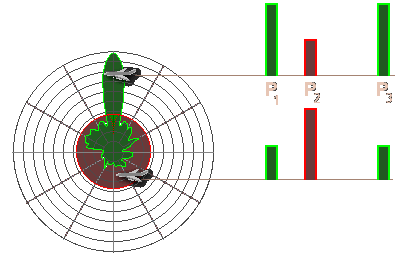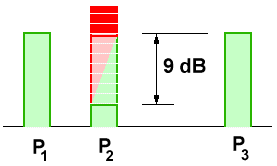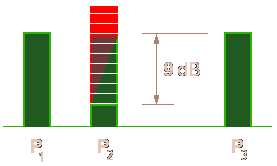Interrogation Path Side Lobe Suppression (ISLS)

Figure 1: Principle of the interrogation path side lobe suppression

Figure 1: Principle of the interrogation path side lobe suppression
Interrogation Path Side Lobe Suppression (ISLS)
Classical SSR interrogators comprise of two transmitting antennas. One is a directional antenna (main beam), the other is a more or less omni-directional antenna producing a „control pattern”. The two interrogation pulses (P1 and P3) are sent out on the main beam. This narrow beam of the rotating antenna head sends these pulses out in a narrow beamwidth between 2° and 3° of azimuth (or the sum beam of a monopulse antenna). However, a third pulse, called P2 is also sent out via the control pattern of an isotropic radiator (or a get with an in-phase opposition feeding of some radiators omnidirectional pattern by a monopulse antenna - the dotted red curve in the diagram).
Each interrogation starts with the P1 pulse. This is followed shortly afterwards by a P2 pulse on the control pattern. An aircraft's transponder will always measure the relative signal strengths of the two pulses and will only ever respond to interrogations where the P1 pulse is at least 9 dB stronger than the P2 pulse.


Figure 2: the relative signal strengths of the pulses
The following conditions arise:
- The maximum amplitude of the P2 pulse is <9 dB below the amplitude of the P1 pulse. In this way, targets are in the main beam and the transponder must reply therefore.
- The maximum amplitude of the P2 pulse is higher than the amplitude of the P1 pulse. In this way, transponders may not reply.
- The maximum amplitude of the P2 pulse is but smaller but not <9 db below the amplitude of the P1 pulse. In this way, the transponder may replay then, however, must not.
